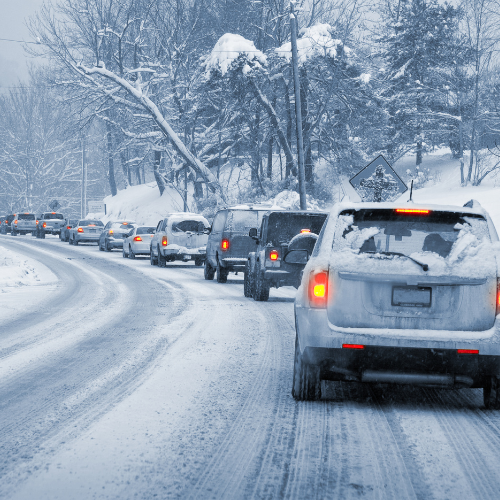
Life:
Summer Safety Campaign
Summertime comes with increased temperatures and more time outdoors. Hot and humid weather can make it more challenging for your body to cool down. If your body is unable to cool down, heat-related illnesses can occur, which, if left untreated, can become life-threatening. The Centers for Disease Control and Prevention says there are common signs of heat illness to monitor for, including the following:
Heat Cramps
Heat cramps are often the first sign of heat illness. Symptoms can include painful muscle cramps, spasms in the legs and abdomen and heavy sweating. If you’re experiencing heat cramps, you should apply firm pressure on the cramping area and sip water. If nausea or prolonged symptoms last for more than an hour, seek medical attention immediately.
Heat Exhaustion
Heat exhaustion is also a common sign of heat illness. Symptoms can include heavy sweating, fatigue, clammy or pale skin, fast or weak pulse, muscle cramps, dizziness, nausea, vomiting, headache or fainting. If you or someone you know may be experiencing heat exhaustion, it’s crucial to move to a cooler environment, loosen clothing and apply cool, wet cloths. Seek medical attention immediately if vomiting or symptoms worsen or last longer than one hour.
Heatstroke
Heatstroke is the most dangerous sign of heat-related illness. Symptoms may include headaches, confusion, nausea, dizziness, body temperature above 103 F, hot or red, damp skin, fainting or loss of consciousness. Do not consume fluids. Heatstroke is a severe medical emergency; therefore, if you or someone else may be in danger of such, call 911 or find transportation to a hospital immediately.
Auto:
Preventing Distracted Driving
It’s easy to become distracted while driving on the road. With increased warm weather, there are more hazards to look out for while driving, such as pedestrians, bicyclists and kids playing outside. Follow these tips to prevent driving distractions:
- Avoid texting or talking on your phone while driving.
- Limit your conversations with passengers and ask them to keep their voices down so you can concentrate on the road.
- Adjust the radio when you are completely stopped.
- Never allow pets to sit on your lap while driving.
- Don’t eat, drink or smoke while driving, as it can take your attention off the road.
- Avoid reading maps or directions as you drive. Instead, pull into a parking lot to determine where you need to go next.
Keeping your hands on the wheel and your eyes on the road can save lives and prevent avoidable accidents.
Home:
Preparing for Hurricane Season
Hurricane season lasts June 1 through Nov. 30. Hurricanes create significant safety risks for both you and your home. Being adequately prepared can help you stay safe before, during and after a tropical storm. Try following these safety tips this hurricane season:
Before
- Create a family communication plan.
- Charge all devices and keep battery packs on hand.
- Prepare an emergency kit with dry goods and first-aid supplies.
- Move all outdoor items inside.
- Follow local evacuation guidelines.
- Check that your generator is properly working.
During
- Secure your home’s windows and doors.
- Do not leave your home during the storm.
- Keep pets and children inside.
- Turn off all gas lines and utilities.
- Monitor the news for weather developments.
- Seek shelter away from doors and windows on the lowest level of your home.
After
- Be cautious of exiting your home.
- Document damage to the outside of your home and call your insurer as soon as possible to file a claim.
- Do not repair your home without professional assistance.
- Avoid turning on the gas, electricity, plumbing, heating or cooling and ventilating systems until you receive confirmation that there is no damage to the lines.
Proper preparation and precautions can help you and your family stay safe during hurricane season.

Vacant Property Risks
Vacant construction sites risk theft, trespassing, fires, and costly losses from damages, injuries, or equipment

Winter Driving Safety Tips
Winter’s slippery roads, freezing temperatures, and poor visibility demand careful driving to protect lives and

Supporting Mental Health for Safer Workplaces
Mental health issues like stress and anxiety can cause distractions, reduced focus, and slower reactions,
